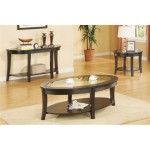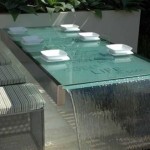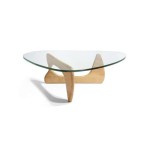The Enduring Appeal of the Large Wooden Rustic Coffee Table
The large wooden rustic coffee table stands as a centrepiece in many living spaces, embodying a blend of functionality, durability, and aesthetic appeal. Its substantial size provides ample surface area for various purposes, while the rustic design introduces a sense of warmth and character to the room. The inherent qualities of wood, combined with a focus on natural textures and finishes, make this furniture piece a timeless addition to diverse interior styles.
The term "rustic" encompasses a range of design elements that emphasize natural materials, simple construction techniques, and the preservation of imperfections. In the context of a coffee table, this translates to the use of solid wood, often featuring visible grain patterns, knots, and variations in colour. The finish typically avoids high-gloss sheens, opting instead for matte or oiled surfaces that accentuate the wood's natural beauty. The size of the table, being "large," is significant as it caters to spatial needs and makes a statement within the room.
The selection of a large wooden rustic coffee table involves consideration of several factors, including the type of wood, the design and construction, the finish, and the overall compatibility with the existing decor. Understanding these aspects is crucial for making an informed decision that ensures both aesthetic satisfaction and long-term durability.
The Significance of Wood Selection
The type of wood utilized in the construction of a rustic coffee table significantly impacts its appearance, durability, and cost. Different wood species possess unique characteristics that influence their suitability for this type of furniture. Hardwoods, such as oak, maple, and walnut, are generally favoured for their strength and resistance to wear and tear. Oak, known for its distinctive grain pattern and durability, is a popular choice for rustic furniture. Maple offers a smoother surface and a lighter colour, making it suitable for spaces that require a brighter aesthetic. Walnut, with its rich, dark tones, provides a sense of elegance and sophistication.
Softwoods, such as pine and fir, are often used in rustic furniture due to their affordability and availability. While they are less dense than hardwoods, they can still provide adequate structural support for a coffee table, especially when properly treated and finished. Pine is particularly well-suited for achieving a rustic look, as it often features prominent knots and grain variations. The choice between hardwood and softwood depends on budget considerations, desired aesthetic, and the intended use of the coffee table.
Beyond the species, the grade of the wood also plays a crucial role. Higher grades of wood will have fewer knots and imperfections, resulting in a more uniform appearance. Lower grades, on the other hand, will showcase more natural characteristics, contributing to the rustic aesthetic. The presence of knots, cracks, and other imperfections is often embraced in rustic furniture design, as these features add character and tell a story about the wood's origins.
Furthermore, the source of the wood is an increasingly important consideration. Opting for sustainably sourced wood ensures that the furniture is produced in an environmentally responsible manner. Certifications such as the Forest Stewardship Council (FSC) provide assurance that the wood comes from responsibly managed forests.
Design and Construction Methods
The design and construction of a large wooden rustic coffee table are integral to its structural integrity and aesthetic appeal. The design should consider the overall proportions of the table, the shape of the legs, and the presence of any additional features, such as drawers or shelves. The construction methods employed should ensure that the table is sturdy and capable of withstanding regular use.
Traditional woodworking techniques, such as mortise and tenon joints, dovetail joints, and tongue and groove construction, are often used in the creation of rustic furniture. These methods provide strong and durable connections between the various components of the table. The mortise and tenon joint, for example, involves inserting a projecting tenon into a corresponding mortise, creating a robust and long-lasting connection. Dovetail joints, known for their interlocking shape, are particularly effective for joining corners and preventing the wood from pulling apart.
The legs of the coffee table play a crucial role in its stability and appearance. Common leg designs for rustic coffee tables include turned legs, tapered legs, and trestle legs. Turned legs, created using a lathe, offer a classic and elegant look. Tapered legs, which gradually narrow towards the bottom, provide a sense of lightness and sophistication. Trestle legs, consisting of two or more vertical supports connected by a horizontal beam, offer a sturdy and rustic appearance.
The design may also incorporate additional features to enhance the functionality of the coffee table. Drawers can provide convenient storage for remote controls, magazines, and other items. Shelves can be used to display decorative objects or to store books and other essentials. The addition of metal accents, such as wrought iron hardware or metal banding, can further enhance the rustic aesthetic.
The size of the table is also a crucial design consideration. A "large" coffee table implies a substantial surface area, suitable for accommodating multiple users and providing ample space for drinks, snacks, and other items. The dimensions of the table should be proportional to the size of the room and the seating arrangement.
The Importance of Finishes and Maintenance
The finish applied to a large wooden rustic coffee table not only enhances its appearance but also protects the wood from moisture, stains, and scratches. The choice of finish depends on the desired aesthetic, the type of wood, and the level of protection required. Common finishes for rustic furniture include oil finishes, wax finishes, and varnish finishes.
Oil finishes, such as linseed oil and tung oil, penetrate the wood and enhance its natural beauty. They provide a matte finish that accentuates the grain and texture of the wood. Oil finishes are relatively easy to apply and maintain, but they offer less protection against moisture and scratches than other types of finishes. Regular application of oil is necessary to maintain the finish and protect the wood.
Wax finishes, such as beeswax and carnauba wax, provide a protective layer on the surface of the wood. They offer a soft sheen and a smooth, tactile feel. Wax finishes are relatively easy to apply and buff, but they are not as durable as other types of finishes. They are susceptible to scratches and water stains, and they require regular maintenance to maintain their appearance.
Varnish finishes, such as polyurethane and lacquer, provide a durable and protective layer on the surface of the wood. They offer a high level of resistance to moisture, stains, and scratches. Varnish finishes are available in a range of sheens, from matte to gloss. However, they can be more difficult to apply than oil and wax finishes, and they may require specialized equipment and techniques.
Maintaining a large wooden rustic coffee table involves regular cleaning and care to preserve its beauty and durability. Dusting the table regularly with a soft cloth helps to prevent the build-up of dirt and grime. Spills should be cleaned up immediately to prevent staining. The use of coasters and placemats can help to protect the surface of the table from scratches and water rings.
Depending on the type of finish, periodic reapplication may be necessary to maintain the protection and appearance of the wood. Oil finishes should be reapplied every few months, while wax finishes may need to be reapplied every year. Varnish finishes are more durable and may not require reapplication for several years.
In addition to regular cleaning and maintenance, it is important to protect the coffee table from extreme temperatures and humidity. Wood can expand and contract in response to changes in temperature and humidity, which can lead to cracking and warping. Avoid placing the coffee table near heat sources, such as radiators or fireplaces, and consider using a humidifier to maintain a stable humidity level in the room.
By carefully selecting the type of wood, design, and finish, and by providing regular maintenance, a large wooden rustic coffee table can provide years of enjoyment and beauty. Its timeless appeal and durable construction make it a valuable addition to any living space.

Long Coffee Table Reclaimed Wood Unique Rustic Low

Rustic Handmade Solid Wood Sleeper Coffee Table Xtra Large Wide Version

Chunky Coffee Table Rustic Solid Wood With Storage Shelf

26 Rustic Coffee Tables And How To Choose The Perfect One For Your Living Space

Wood Table Tree Slice Coffee Za Homes

Wooden Rustic French Style Large Coffee Table With Drawer

Rustic Handmade Solid Wood Sleeper Coffee Table Xtra Large

Ellipse Rustic Oak Coffee Table Living Room Furniture Bentley Designs Ltd

51 Rustic Coffee Tables That Redefine Shabby Chic

Rustic Wood Coffee Table Large Reclaimed Unique Mid Century Top Live Edge Solid Rectangular Custom Farmhouse Wooden







